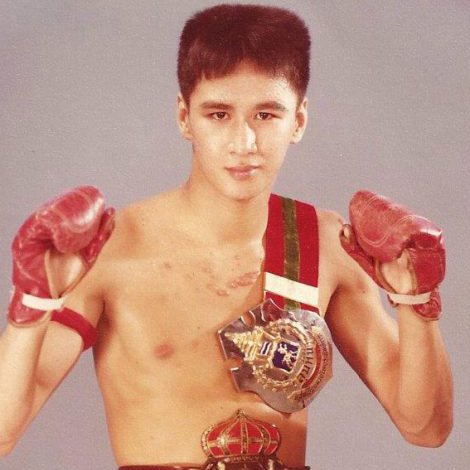Search the Community
Showing results for tags 'martial arts'.
-
Kali (Pekiti Tirsia to be more specific) is the only other martial art I have practiced for a significant time (about 8 years or so). It's a Filipino art that is not very "sportified" and is based on the use of blades and impact weapons (empty hands training is done, too though but its based on the same patterns and concepts as the blades). I found it really interesting how similarities between different arts pop up, especially with the more traditional styles. There is so much that sounded very much familiar to me in the Muay Lertrit sessions. Things that are either very much the same as I learned in Kali or at least follow the same principle. There is this thing about "let them try to strike you but make them pay every time" that we also did a lot. Directly counterattacking instead of blocking is a central concept there. Stuff like parrying a punch with a move that, if done well, is supposed to strike the opponent in the same move as it parries their punch. Or making someone who uses a leg kick on you pay by not only blocking with your own shin but dropping your knee on their ankle while doing so, very similarly to what the general demonstrates in that one session. Also I've watched the session with Gen Hongthonglek a few times and only the last time it suddenly occurred to me that the way he uses fakes, delayed timing and counters is actually very similar to how I used to do sparring with the stick in Kali when I was more experienced. I'd typically move back to keep range (I'm a very tall guy with long arms) and would constantly weave my stick in front of me or throw my opponent off with some weird position kind of like Gen does with his feet before he lands his big kicks. This kinda stuff is really fascinating to me. Sure there are differences between arts but often there are also overlaps or concepts that can be applied to other arts as well. Did you have similar experiences? PS: Of course there are differences, too: For example Kali teaches you to give not getting hit (at all if possible) top priority because an opponent could always carry a weapon even if you don't see it right away so every hit might be very dangerous. Thats something I have to practice to overcome a bit in Muay Thai where the opponent is guaranteed to not have a weapon and getting hit is not actually a mistake in principle.
- 13 replies
-
- 7
-

-

-

-
- technique
- muay thai library
-
(and 1 more)
Tagged with:
-
Which martial art sparring is closest to a street fight?
- 4 replies
-
- Martial Arts
- Mixed Martial Arts
-
(and 2 more)
Tagged with:
-
I wanted to post my guest post here: Broken Tusk: Breaking the Body and the Art of Fighting because I think this is a really deep topic and possibly there is a lot to be talked about here. The idea is that the fighting arts compose a kind of graphic system that can be used to express an inherent beauty in violence, and that the pursuit of fighting arts, in that they are arts, and in that they verge towards a real violence, can be used to restore bodies and spirits that have been broken. In fact, through fighting the body can be built as a "higher" body, and higher house, a higher vehicle, by analogy. An excerpt: ...Sylvie’s “house of the spirit” doesn’t really exist any longer, not in any sense that we often assume someone to have one. Her house of the spirit, her body, was broken that day of multiple violations. Her spirit has no dependable house, no real protective shell. Since she was 11 she has been living in the ruins of her body-house, and as the human spirit is both beautiful and adaptable she has learned to live in those ruins. She can hide in them, in the broken pieces, use the shadows, the crevices, the places people don’t think to look. She learned since that young age to be in the ruins, of a kind. What Sylvie is doing in Thailand – for all those who don’t get (or worse, approve of) what she is doing – is building a higher house, or one can just as easily say, a higher body to replace the broken house/body she has had for all these years. This is why she strains and breaks herself over and over and over, reaching up to the promise of calm in the onslaught of violence. And like Genesha she cannot stop until the epic is written. This is why the Art of Muay Thai is a salvation and even a duty, the calm she sees in the bodies and faces of so many Thais that have fought since a young age – the poise, the balance, the grace, the ease – it calls her. This attempt is the most beautiful thing I’ve ever seen in my life. I'd love to hear the experiences and thoughts of others. So many focus on the violence of the real fighting arts and imagine a motive of something between aggression and rage. But to me the fighting arts, when pursued, are something so different. They compose a base language, and a writing system that uses the broken edges of the body as its instrument. In the article I draw the analogy of the myth of Ganesha, and his broken tusk:
Footer title
This content can be configured within your theme settings in your ACP. You can add any HTML including images, paragraphs and lists.
Footer title
This content can be configured within your theme settings in your ACP. You can add any HTML including images, paragraphs and lists.
Footer title
This content can be configured within your theme settings in your ACP. You can add any HTML including images, paragraphs and lists.